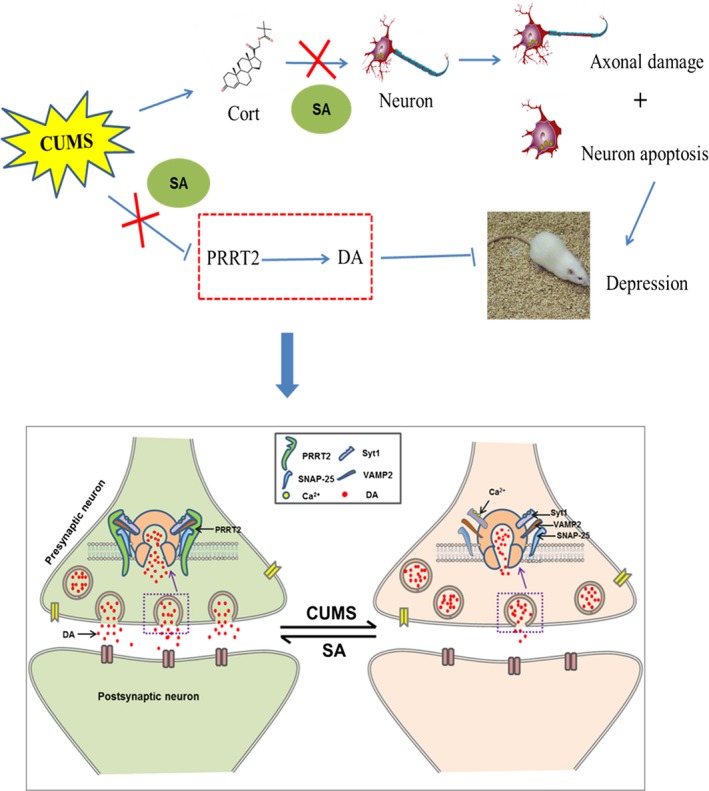Figure 9.

A, The mechanism diagram of the present study. Our study indicated that SA could significantly relieve depressive symptoms of CUMS rats. On one hand, SA could up‐regulate the expression of protein PRRT2 and increase the content of DA in hippocampus. On the other hand, SA can reduce the toxic effects of excessive corticosterone on nerve cells. Therefore, PRRT2 is expected to be a potential target protein for SA to exert anti‐depressive effects. B, PRRT2 played a key role in DA release process. PRRT2 is mainly located in presynaptic terminals of neurons. It acts as a catalyst and a regulator in the fusion and Ca2+‐sensing apparatus for fast synchronous release processes by interacting with SNARE proteins, including VAMP2, SNAP‐25 and the Ca2+ sensor Syt1. PRRT2 of rats subjected to the CUMS procedure was down‐regulated and the proteins Syt1, VAMP2 and SNAP‐25 could not interact well with each other. As a result, the release probability and amount of released DA were reduced in the hippocampus. Chronic administration of SA (50 mg/kg) could up‐regulate the PRRT2 expression level and then increase the release probability and the amount of released DA
